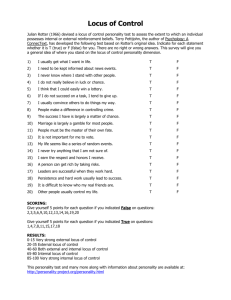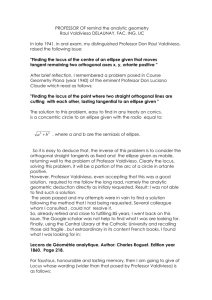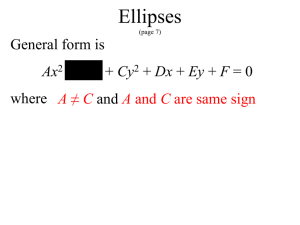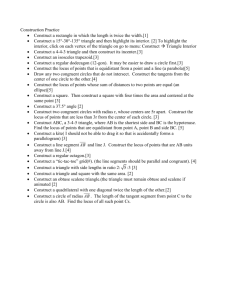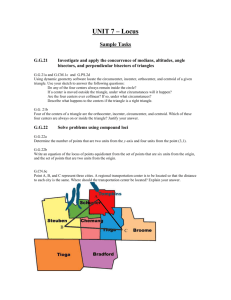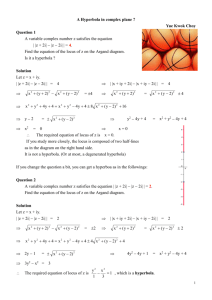47. Van Schooten's Locus Problem
advertisement
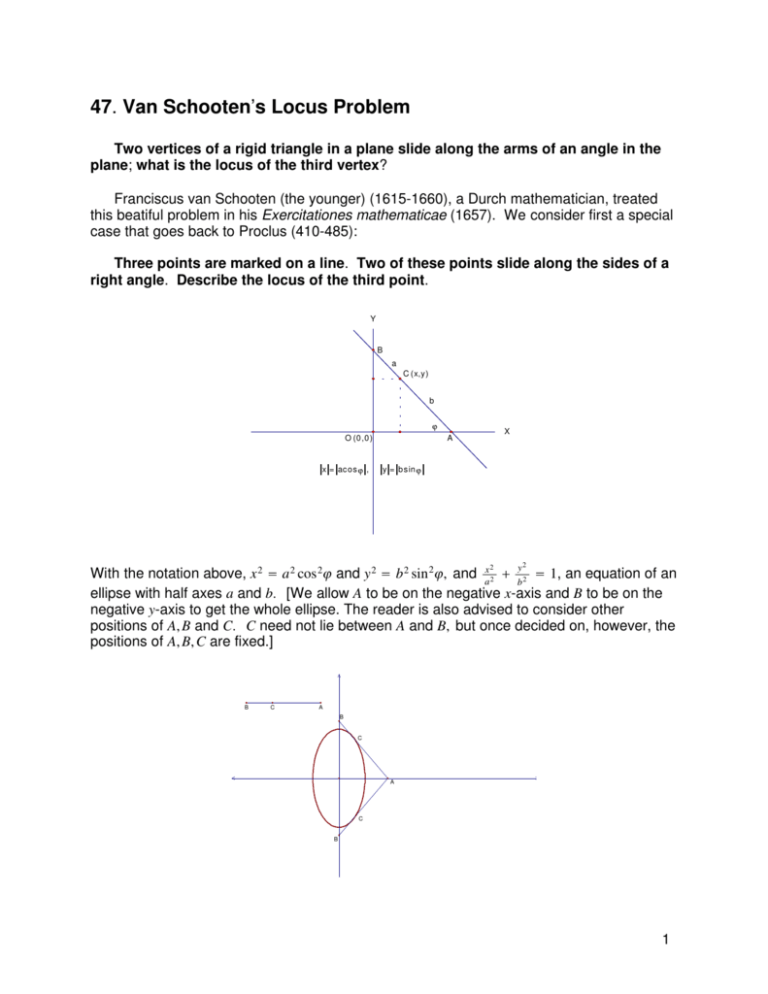
47. Van Schooten’s Locus Problem Two vertices of a rigid triangle in a plane slide along the arms of an angle in the plane; what is the locus of the third vertex? Franciscus van Schooten (the younger) (1615-1660), a Durch mathematician, treated this beatiful problem in his Exercitationes mathematicae (1657). We consider first a special case that goes back to Proclus (410-485): Three points are marked on a line. Two of these points slide along the sides of a right angle. Describe the locus of the third point. Y B a C (x,y) b ϕ O (0 ,0 ) x = ac os ϕ , X A y = b sin ϕ y2 With the notation above, x 2 a 2 cos 2 I and y 2 b 2 sin 2 I, and ax 2 b 2 1, an equation of an ellipse with half axes a and b. [We allow A to be on the negative x-axis and B to be on the negative y-axis to get the whole ellipse. The reader is also advised to consider other positions of A, B and C. C need not lie between A and B, but once decided on, however, the positions of A, B, C are fixed.] 2 B C A B C A C B 1 This locus property is the basis of the so-called paper strip construction of an ellipse. On a sharp edge of a paper strip, mark off three points in order B, A, C so that BC a and AC b a. Move the strip in such a way that A always remains on the x-axis and B on the y-axis, and constantly mark the location of C. The locus of C is an ellipse with half axes a and b. (Dörrie continues to describe the trammel, a mechanical device for drawing ellipses.) Now for the solution to van Schooten’s problem! Let D be the vertex of the fixed angle - along the sides of which vertices A and B of the rigid triangle dABC slide. II C Q K B M δ A D P I Let K be the circumcircle of dABD, M its center, and P and Q points at which line MC meet K. By the extended law of sines, AB is constant and equals 2R, R the radius of the circumcircle, and thus the circle K does not change size as A and B slide along the sides of ADB, but "moves" with dABC. The arcs AP and AQ then continuously change their position but not their magnitudes. This means that the inscribed angles ADP and ADQ remain constant, and hence lines I DP and II DQ. Since PQ is a diameter of circle K, I II. We can therefore consider the motion of C on the triangle as the motion of C on the line PQ where P and Q slide along perpendicular lines I and II. According to the special case considered above, the locus of C is an ellipse: 0 µ 0 0 2 C B A D C B Note 1. For each A, there are two possibilities for B. Note 2. The argument above also shows that the axes of the ellipse are I and II, and the axes have length 2 CP and 2 CQ. Note 3. It’s a good exercise to use a geometry software program to implement the motion of dABC along two arbitrary intersecting lines. Use a "locus" command to follow C. 3
